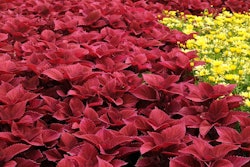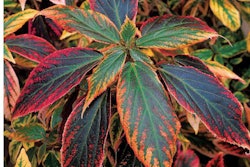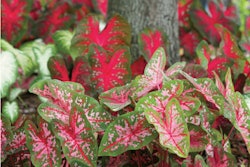Water conservation is growing in urgency. These simple methods can save money for your clients — and burnish your sustainable-landscaping credentials.
While making predictions about the future of landscaping is a gambling proposition, it’s a sure bet that water use and related government restrictions will be on the table.
In fact, in the most recent poll of TLC readers, 65 percent said water use would be a major concern of the future.
While you might think the solutions will involve sophisticated technology, such as weather-based and wireless irrigation controllers, soil-moisture sensors and multi-stream rotor nozzles — and you would be right – there’s no need to feel like an Amish farmer at an electronics convention.
We interviewed several 2011 TLC Landscaper of the Year Finalists and their staffs with expertise in water conservation for this story, and their top recommendations include simple, basic and inexpensive water-conservation techniques. While noting there’s definitely a place for more-sophisticated technology, these contractors consistently cited five decidedly low-tech methods as their go-to water-conservation techniques: proper mulching, turf reduction, grouping plants with similar water needs, collecting rainwater and using drought-tolerant plants.
In many areas, water conservation is a hot-button issue for homeowners and commercial-property owners alike. Water-use restrictions and skyrocketing water rates are forcing them to rethink their water-use habits — and that’s creating business opportunities for sustainability-minded landscapers.
“If I was a smaller landscaper, I’d market myself as a water-conservation specialist — especially where water is scarce,” says Gene Ebertowski, president of FloraTerra Landscape Management, San Jose, California.
“There are a lot of landscapers out there with mowers and blowers and trucks, so you need a differentiating factor. Smart landscapers are turning to water conservation.” Here are water-conservation methods preferred by top landscapers:
Proper mulching
When properly applied at a depth of 2 to 3 inches, mulch is the Swiss army knife of water-saving methods. Along with retaining moisture, mulch also reduces the need for weeding, deters erosion, enriches soil, protects soil structure and stabilizes ground temperatures, so plant roots stay cooler in hot weather and warmer in cold weather, Ebertowski says.
“Plus, it adds visual curb appeal to landscapes,” he adds. “I like dyed recycled bark mulch for several reasons. The cost is less expensive, so there is a potential to increase your margins on a project. You’re also supporting the environment and sustainability because they don’t have to cut down trees for the bark or ship it in from long distances; it’s often produced on a local level.
Mulch retains water and reduces the need for weeding.“There’s also natural mulches, like ground fir bark or shredded cedar,” he continues. “It’s a lot more expensive. However, in some cases, the benefits outweigh the cost. Benefits include its ability to break down faster in the soil, improving microbial activity and soil tilth, and it’s all natural and has a natural fragrance that has a clean, earthy smell.”
Mulch also gets the nod from Ben Pamplin, executive vice president and COO of Heart of Texas Landscape & Irrigation in Belton, Texas: “It’s a fairly inexpensive way to make the most of your watering, especially if you’re under water-use restrictions.”
Turf reduction
Another popular technique is replacing traditional turf with flower beds or native meadows and grasses that require little water. In Virginia, for instance, Ed Yates, the nursery manager for Charlottesville-based J.W. Townsend, says his company has converted hundreds of acres of lawn to natural, prairie-like meadows during the past several years.
“If I was a smaller landscaper, I’d market myself as a water- conservation specialist, especially where water’s scarce.”
“It’s catching on huge,” Yates says. “We use warm-season grasses, such as little bluestem and sideoats grama, to create a low-growing meadow. You mow it once a year during winter when it’s dormant. They don’t need any watering or fertile soil. Nothing is too dry for them because they grow deep, deep roots.
“Admittedly, it’s not for everyone,” he notes. “It attracts wildlife, and some people like their yards a bit more tidy. Most often, we leave a little lawn near the house and install the meadow farther out.”
Yates also recommends liriope spicata, an aggressive, non-native ornamental grass that stays manicured and requires no irrigation. It grows about 6 inches tall, versus 18 to 30 inches high for bluestem or sideoats grama.
Eliminating turf reduces water consumption by 50 percent or more, Ebertowski explains. Plus, it can reduce maintenance costs by half because turf alternatives may only need mowing three or four times a year, compared to weekly for traditional lawns.
To minimize client resistance, FloraTerra uses software that overlays a conceptual landscape design onto a photo of a property, so the customer can see what a turf alternative will look like.
“It’s a useful tool in up-selling these kinds of upgrades,” Ebertowski says. “People think their property will look like a desert, but that’s not the case. There are a lot of choices out there aside from just succulents. We want something that’s colorful and inviting — that puts the ‘wow’ factor back in the property.”
Grouping plants by water needs
Grouping plants with similar water needs would seem to be a no-brainer to save water, yet it’s a common homeowner mistake that landscapers must often undo.
“There’s no sense in drowning some plants to save others,” Yates notes. “We try to keep like plants together. We offer our customers a one-year warranty (on plants), so it’s critical to our bottom line to group plants with similar water needs. If we put drought-loving plants with water-loving plants, we end up replacing plants.”
“There’s no sense in drowning some plants while trying to save others.”
Landscapers also need to be mindful of what they plant next to lawns. “Fescue turf and sod require so much water that there’s a danger of drowning plants along the perimeter during the first year, when you water heavily to keep grass alive,” Yates says.
Water collection
Rainwater is free, so use it to irrigate your client’s yard. From small rain barrels to larger cisterns to rain gardens, the concept of collecting rainwater run-off, then pumping it out to irrigate yards, is gaining traction among consumers.
Yates says in his area, cisterns — typically 700- to 5,000-gallon concrete or plastic tanks — are popular. They’re either buried or located above ground and gravity-fed via gutters and downspouts. Water-level indicators show homeowners when the cistern is full so they can stop water collection and avoid backups.
“Cisterns are like rain barrels on steroids,” Pamplin says, noting a typical cistern footprint in his area is about 15 feet tall and 12 feet in diameter. “We try to integrate them into the landscape so they’re not an eyesore. For example, we fence around them, or you can bury them; it’s all about how much money a customer wants to spend.”
You can also collect groundwater. For example, Pamplin’s company installs large, underground storage bladders that collect rainwater after it passes through permeable-paver installations.
“We’re really trying to take the lead on this in our area,” he says. “I see this as the next up-and-coming thing in the next five to 10 years, especially in commercial use. You can take courses to learn how to install them. They’re not too incredibly complex.”
Low-water-use plants
Drought-tolerant plants also can offer customers water savings and still retain curb-appeal.
“People would absolutely be surprised at the nice choices available for low-water-use perennials,” Ebertowski says. His favorites include New Zealand flax, an accent planting that features interesting foliage colors (green, yellow, red, burgundy, apricot and pink) and textures; strawberry tree, which produces a visually interesting peeling bark, evergreen foliage and reddish fruit that attracts wildlife; and Mexican feather grass.
“Virtually all new, large houses we landscape include cisterns.”
In Virginia, drought-tolerant boxwoods are popular, Yates says. He also recommends perennials such as purple coneflower, black-eyed Susans, yarrow varieties and sedum.
Pamplin suggests landscapers in dry areas consider yellow bells (esperanza), lantana and sage, an evergreen plant that adds color in winter.
Rainfall Runs Through It
Looking for a low-tech solution to customers’ demands for better, more cost-effective stormwater management? The answer could be right under your feet: permeable pavers.
Permeable paving systems use interlocking pavement of materials ranging from concrete to recycled materials, which are separated by joints. These joints allow water to flow between the pavers and through a base of aggregate consisting of layers of crushed stone.
This construction provides “void” room that allows water to percolate into the soil subgrade. In fact, void space between and beneath the pavers makes up about 30 to 40 percent of an installation, says David Smith, technical director for the Interlocking Concrete Pavement Institute (ICPI). In installations above non-porous soil, such as clay, a drainage pipe can be installed. (To learn more, see www.icpi.org/permeablepavers.)
“Sales of permeable pavers have been growing 20 to 25 percent during the past several years,” Smith says.
By Ken Wysocky









